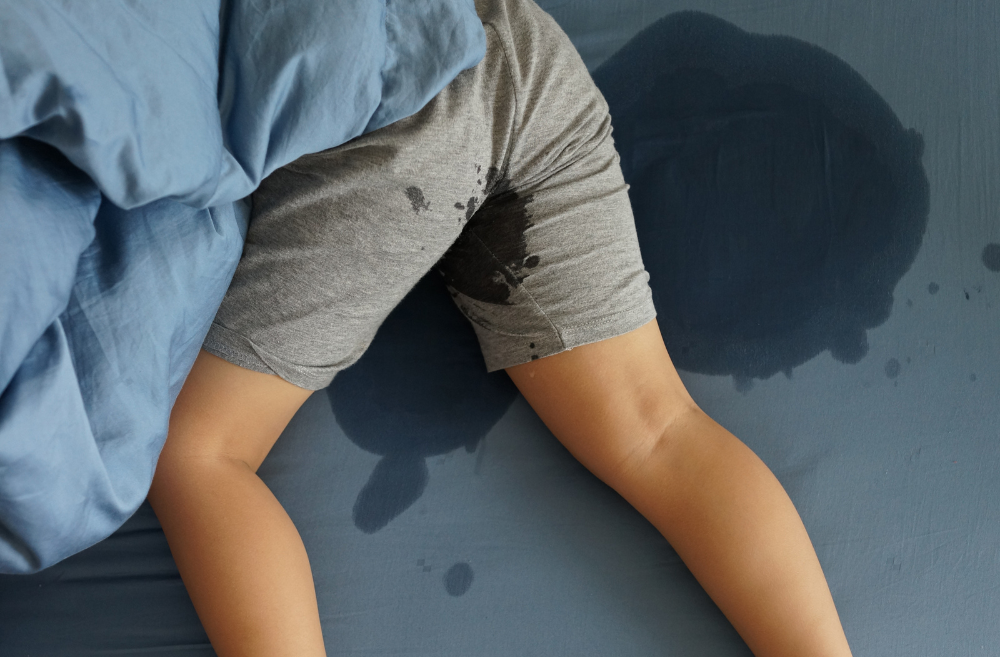By: Red Door Pediatric Therapy Staff
Understanding Bedwetting in Children: Age, Underlying Issues, and Potential Solutions
Bedwetting, medically known as nocturnal enuresis, is a common issue that many children experience during their early years. As a parent, it’s natural to wonder when bedwetting typically stops and whether your child may have an underlying issue related to incontinence. In this article, we will explore the age at which bedwetting tends to resolve, discuss potential underlying causes, delve into the impact of physiological bowel issues on urination, and shed light on the role of Physical and Occupational Therapy in addressing pelvic floor dysfunction.
When does bedwetting typically stop?
Bedwetting is considered normal in younger children as they develop bladder control. Statistics show that approximately 15-20% of five-year-olds, 10% of seven-year-olds, and around 5% of ten-year-olds experience bedwetting. By adolescence, the vast majority of individuals have outgrown bedwetting, with only around 1-2% still affected.
Identifying underlying issues related to incontinence:
While bedwetting is often a benign developmental phase, it’s essential to rule out underlying medical conditions or emotional factors that could contribute to the issue. If your child continues to wet the bed beyond the typical age range, or if other symptoms accompany the bedwetting, it may be worth consulting a healthcare professional. They can help determine if there is an underlying issue, such as a urinary tract infection, diabetes, sleep apnea, pelvic floor dysfunction, anatomical differences, or psychological stress, that requires further evaluation and treatment.
Physiological bowel issues and their impact on urination:
Physiological bowel issues, such as constipation or bowel dysfunction, can have a significant impact on the urination process. The rectum and bladder share close proximity in the body, and when the rectum is distended due to constipation, it can cause the bladder to become compressed or irritated. This can lead to increased urgency, frequency, and even bedwetting. Addressing and managing these bowel issues can help alleviate bedwetting problems.
Therapy for pelvic floor dysfunction:
In some cases, bedwetting and other incontinence issues can be linked to pelvic floor dysfunction. The pelvic floor muscles play a crucial role in maintaining bladder control. However, certain factors such as muscle weakness, muscle tension, or coordination difficulties can disrupt their function. This is where a therapist trained in the area of pelvic floor dysfunction can make a significant difference.
A skilled therapist can assess the pelvic floor muscles, identify any dysfunction, and create a personalized treatment plan. Treatment may include exercises to strengthen or relax the pelvic floor muscles, biofeedback techniques, behavioral modifications, and education on bladder retraining strategies. By addressing the underlying pelvic floor dysfunction, physical therapy can help children regain control over their bladder function and reduce or eliminate bedwetting episodes.
Bedwetting is a common issue among children, and most kids outgrow it as they develop bladder control. However, it’s crucial to be aware of the typical age range for resolution and the possibility of underlying issues related to incontinence. If you have concerns about your child’s bedwetting in Beulah, Minot, Bismarck, Fargo or Grand Forks, our therapists are uniquely equipped to answer your questions! These services and consultations are offered in our other clinic locations as well. It is important to consult a healthcare professional who can help determine whether further evaluation is necessary. Additionally, consider the impact of physiological bowel issues on urination and the potential benefits of therapy for addressing pelvic floor dysfunction. Remember, with the right support and appropriate interventions, bedwetting can be effectively managed, helping your child regain confidence and comfort during sleep.

